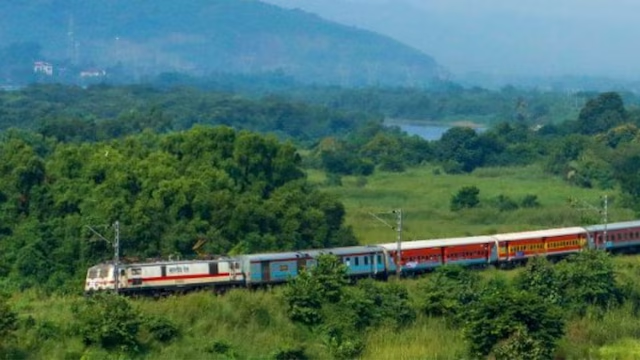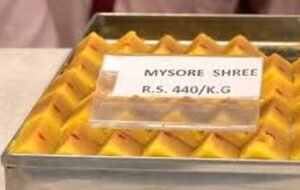
Konkan Railway Merger with Indian Railways
Introduction: Strengthening National Rail Connectivity
In May 2025, the Maharashtra Government officially approved the merger of the Konkan Railway Corporation Limited (KRCL) with the Indian Railways, clearing the final administrative hurdle to a project already supported by Goa, Karnataka, and Kerala. This strategic decision is aimed at transforming India’s coastal railway route into an integrated, financially sustainable, and modern segment of the national railway network.
This decision holds substantial governance, economic, and infrastructure relevance and is an essential topic under CLAT Current Affairs 2026. Aspirants preparing through the best online coaching for CLAT should understand the legal, economic, and administrative implications of such infrastructure mergers.
Why in News?
- The Maharashtra Government approved the long-discussed merger of KRCL with the Indian Railways.
- Other states—Goa, Karnataka, and Kerala—had already given their consent.
- The move addresses KRCL’s long-standing financial struggles and aims to improve connectivity, frequency, and modernization of railway services.
- Two key conditions set by Maharashtra were reportedly accepted by the Central Government, paving the way for seamless integration.
Background: What is the Konkan Railway and KRCL?
Establishment and Purpose
- Konkan Railway (KR) was established in 1990 as a special-purpose entity under the Ministry of Railways to undertake the complex task of constructing and operating railways along the Western Ghats—a region known for its treacherous terrain and monsoon-heavy climate.
Operational Model
- Began operations in January 1998.
- Total route length: 741 km, connecting Roha (Maharashtra) to Thokur (Karnataka) and extending to Kerala.
- The KRCL functions as a joint venture:
- Centre: 51%
- Maharashtra: 22%
- Karnataka: 15%
- Goa: 6%
- Kerala: 6%
- Operates outside the traditional Indian Railways structure, maintaining distinct finance and governance.
Strategic Importance
- The Konkan Railway significantly reduced travel time between India’s west coast and the rest of the country.
- It supports both passenger and freight movement, enhancing connectivity to port cities, tourism hubs, and coastal trade routes.
- It is also known as one of India’s most scenic and challenging railway routes.
Behind the Merger: Key Reasons and Financial Stress
Despite its initial success, KRCL has been struggling with:
Rising Operating Costs
- Maintaining railway infrastructure in a rain-heavy, hilly region requires heavy investment and continuous monitoring.
Revenue Limitations
- Freight traffic remains modest.
- High debt from infrastructure loans, especially from international and domestic agencies, has made the model unsustainable.
Lack of Upgrade Funds
- The standalone model made it hard to raise funds for modernisation, digital infrastructure, and integration with national ticketing, security, and logistics systems.
Why is the Merger Happening Now?
Official Trigger: Maharashtra Government’s Approval
- In a letter from Chief Minister Devendra Fadnavis to Union Railway Minister Ashwini Vaishnaw, it was conveyed that the standalone model is unsustainable.
- The merger will enable KRCL to:
- Access Indian Railways’ larger resource pool.
- Leverage the national network for better traffic distribution and cost-sharing.
Conditions for Approval
Maharashtra laid down two key conditions:
- Retention of the ‘Konkan Railway’ name post-merger to preserve legacy and identity.
- Indian Railways to reimburse ₹394 crore worth of investments previously made by Maharashtra.
Both conditions were reportedly accepted by the Centre.
The Upshot: Strategic and Passenger Benefits
Better Connectivity
- Seamless integration with national routes like the Konkan-Goa-Mumbai-Pune, Karnataka-Kerala, and Southern Freight Corridors.
Higher Efficiency
- Unified booking and logistics.
- Digital ticketing through Indian Railways portals.
- Rationalized and competitive freight charges.
Modernization Push
- Access to larger investment pools for:
- Track doubling
- Electrification
- AI-based safety measures
- Passenger amenities
Passenger Safety and Comfort
- Integration will bring better customer grievance redressal, standardization of services, and smart station upgrades.
Economic and Regional Impact
Employment Generation
- Infrastructure upgrades, station modernization, and logistics development will boost local employment, particularly in coastal districts of Maharashtra, Goa, Karnataka, and Kerala.
Tourism Boost
- The scenic KR line is a magnet for domestic and international tourists. Better services and ticketing integration will attract more travelers.
Urban-Rural Linkages
- Improved rail services will enhance rural access to urban markets, employment, and educational opportunities.
Legal and Administrative Significance
For CLAT 2026 aspirants, this event is important from a legal-administrative lens:
- Federalism and Infrastructure
- The merger involves coordination between the Centre and four states, showing how cooperative federalism plays out in national infrastructure.
- Public Sector Governance
- KRCL is a classic PSU (Public Sector Undertaking) created for a specific region. The decision to dissolve or merge such an entity must follow corporate, administrative, and constitutional procedures.
- Policy & Planning
- This move aligns with Indian Railways’ broader National Rail Plan 2030, aimed at achieving seamless multimodal logistics and rail expansion.
Challenges in Implementation
Despite optimism, the merger also faces short-term challenges:
- Realignment of organizational roles across KRCL and Indian Railways employees.
- Legal transition of assets and liabilities.
- Reworking vendor contracts and public-private agreements made under KRCL.
- Timeline: Full functional merger may take a few months to over a year.
Future Projections
- This merger could serve as a template for other regional PSUs that are struggling with scale and finance.
- It could promote a more centralized, standardized, and digital Indian railway ecosystem.
- Initiatives like Amrit Bharat Station Scheme, Dedicated Freight Corridors, and PM Gati Shakti may use this integrated model for implementation across other regions.
Explanation of Key Terms
Konkan Railway Corporation Limited (KRCL):
A public-sector joint venture created to build and operate railways through the Konkan coast, independent from Indian Railways.
Special Purpose Vehicle (SPV):
A legal entity created for a specific infrastructure task. KRCL is an SPV formed under the Companies Act.
Joint Venture (JV):
A business arrangement in which two or more parties agree to pool their resources for a specific goal. KRCL is a JV among five stakeholders, including the Union Government.
Western Ghats:
A mountain range along India’s west coast, recognized for its ecological sensitivity and engineering challenges in construction.
Conclusion: A Step Towards Unified Rail Infrastructure
The Konkan Railway merger reflects India’s evolving vision of ‘One Nation, One Railway’. It represents a balance between financial sustainability, regional aspirations, and national integration. For CLAT aspirants, this event offers a live example of how governance, federal coordination, infrastructure policy, and public sector law intersect to shape India’s development.
Such cases are essential under Current Affairs 2026, and preparing with the best online coaching for CLAT ensures aspirants develop a layered understanding of such developments. The merger may appear as a passage-based comprehension, a legal application question, or even in General Knowledge sections in the CLAT 2026 exam.







